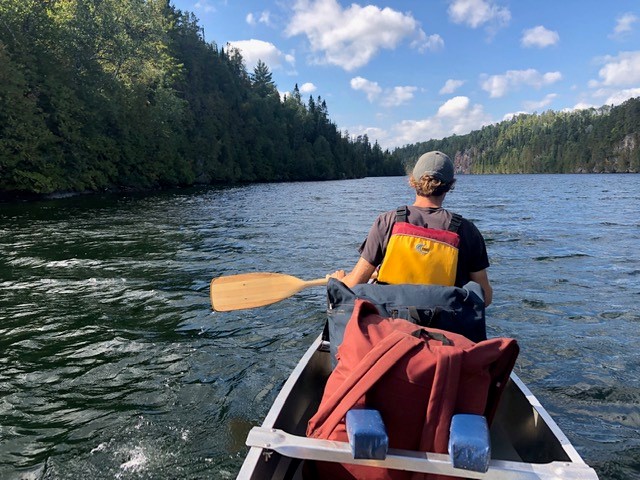Value in Observation
Last spring, at the start of the pandemic, I found myself spending a lot of time in the park near my apartment in St. Louis. We were in the middle of a six week shelter in place mandate by the city. With a pause on my work and feeling quite cramped in my little apartment, the park offered a second space to be.
At first, having nothing to do other than wander around the park, often aimlessly, felt wrong. Nothing about this was productive. When asked by friends or family how I was using all of my time, I felt I had little to show for it. I felt embarrassed, almost ashamed that I wasn’t finding anything better to do.
But the more time I spent in the park, the more I enjoyed it. The place was beginning to grow an immense sense of familiarity. If it was late in the afternoon, I would keep an eye out for a red-tailed hawk that would usually show up in the west side of the park. On one occasion I thought I heard the hawk’s screech, only to find the sound had come from a nearby blue jay. Oddly, seconds later the hawk appeared. Was this call from the blue jay somehow related to the presence of the hawk?
Another day I found myself observing a park employee mowing the lawn. As the mower moved away from me it left a strip of lawn that was lighter in color, and when it turned towards me, the grass behind it was much darker. If I looked at the strips at a right angle, they disappeared completely into a single shade of green. Later, while walking home past the houses in my neighborhood, I noticed different patterns in the lawns, each presenting a different habit of mowing. Some started by mowing the perimeter of their lawns and working in. Others were keen to make parallel strips. Some had whimsical qualities, a tangle of twisted lines with little order.
It soon became clear that I wasn’t the only one growing familiarity with the park. At some point I met a neighbor in the park who was also watching the bluejays. She told me that when jays see a hawk they will imitate its call in order to alert other jays of the hawk’s presence. Another day I noticed very organized piles of acorns, pinecones, and sticks under a shrub by the stream. The next day the mystery was solved, as I watched a grandpa and grandson approach the piles with new materials to add. The boy excitedly added to his collection, while being careful to organize by color, texture, and shape.
What was once a way to pass time and escape my apartment soon turned into a growing familiarity with my neighbors and landscape, a developing sense of place. With uninterrupted time and little agenda, could it be that I and others were opening our eyes to our surroundings? With these thoughts in mind, I was immediately reminded of my days at Wilderness Canoe Base.
One of my favorite parts of a trip into the boundary waters comes usually on a second or third day. These often occur during a down moment, such as the time between hanging a bear bag and scrambling into tents to escape the oncoming swarm of mosquitoes.
Someone is peeling away layers on a strip of birch bark, which curiously seems to separate endlessly into thinner and thinner layers. Somebody else is throwing pine needles into the fire noticing how some crackle and erupt into flames almost instantly, while others soundlessly and slowly turn to ash. Meanwhile, two others sitting by the lake are intently discussing the pattern of light that is dancing on a shoreline rock, reflecting off the water from the setting sun.
In these moments, I’m reminded of the value of doing nothing. Like my time in the park, a canoe trip presents an opportunity to immerse ourselves in our surroundings. When left to our own devices, we begin to explore our surroundings. It is a spontaneous instant of our landscape drawing ourselves out to ask questions. I believe there is power in the knowledge that comes from asking these questions. In her book Braiding Sweetgrass, Robin Wall Kimerer warns of a concept known as species loneliness, “a deep, unnamed sadness stemming from estrangement from the rest of creation, from the loss of relationships”. How do we escape this fatal trap?
I think a good way to start is by exploring. The wonderful thing is that exploring can look however you want it to. It can be loud and messy, or quietly done in solitude. It can look like play or rest. It can be done in the wilderness three nights into a camping trip, or on a stroll through your neighborhood. Keep an eye out for both the ordinary and the unexpected. Ask questions and talk to those around you. By this way we might better know the world, our neighbors, and ourselves.
Written by Jack Rosenwinkel, 2021 WCB winter volunteer and former staff
